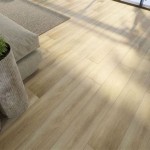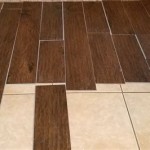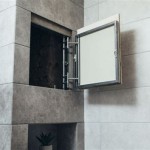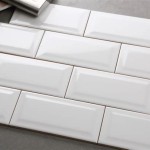Can You Install Vinyl Plank Over Ceramic Tile? A Comprehensive Guide
The question of whether vinyl plank flooring can be installed over existing ceramic tile is a common one for homeowners considering a flooring renovation. The appeal of this option lies in the potential time and cost savings associated with avoiding the removal of the existing tile. While installing vinyl plank over ceramic tile is indeed possible, it’s not always the ideal solution. Several factors must be assessed to ensure a successful and long-lasting installation.
This article will delve into the considerations, preparation steps, and potential pitfalls to consider when approaching this type of flooring project. Understanding these aspects will allow homeowners to make an informed decision about whether installing vinyl plank over ceramic tile is the right choice for their particular situation.
Key Considerations Before Installation
Before commencing any installation, it is crucial to evaluate the existing ceramic tile floor meticulously. This assessment will dictate whether the project is feasible and what steps are required to achieve a satisfactory outcome. Ignoring these initial considerations can lead to problems down the line, potentially requiring costly repairs or even a complete re-installation.
The most critical factor is the condition of the ceramic tile itself. Any loose, cracked, or uneven tiles must be addressed before proceeding. Loose tiles indicate that the bond between the tile and the subfloor is compromised, which can create instability and eventual damage to the new vinyl plank flooring. Similarly, cracks in the tile can propagate through the vinyl, causing unsightly lines or even complete breakage. Uneven tiles create an uneven surface that can affect the stability and appearance of the vinyl plank.
The type of vinyl plank is also an important consideration. Thicker, more rigid vinyl planks are generally more forgiving and can better bridge minor imperfections in the underlying tile. Thinner, more flexible planks are more likely to conform to any irregularities, making them less suitable for installation over ceramic tile. The manufacturer's recommendations for subfloor preparation should always be followed, as these guidelines will often indicate whether or not the product is suitable for installation over non-wood substrates like ceramic tile. Ignoring these recommendations can void the warranty and lead to installation failures.
Another key consideration is the presence of grout lines. Grout lines create an uneven surface that, if not properly addressed, can telegraph through the vinyl plank flooring. Telegraphing refers to the visible appearance of the grout lines through the new flooring material. This is especially noticeable with thinner vinyl planks or those with a low gloss finish. Addressing grout lines is crucial for achieving a smooth and aesthetically pleasing finish.
Finally, it's essential to consider the overall height of the finished floor. Adding vinyl plank over ceramic tile will increase the floor's height. This can create issues with door clearances, transitions to other flooring types, and appliances. Measure the existing floor height and the thickness of the vinyl plank to ensure that the finished height will not create any functional or aesthetic problems.
Preparing the Ceramic Tile Surface
Proper preparation is paramount for a successful vinyl plank installation over ceramic tile. The goal of the preparation process is to create a smooth, level, and stable surface that will provide a solid foundation for the new flooring. This process typically involves several steps, each designed to address specific potential issues.
The first step is to thoroughly clean the existing ceramic tile floor. Remove any dirt, dust, grease, or wax using a suitable cleaner. This ensures that any leveling compound or patching material will adhere properly to the tile surface. A degreasing cleaner may be necessary if the tile has been exposed to cooking grease or oils.
Next, thoroughly inspect the tile for any loose or damaged pieces. Loose tiles should be carefully removed and re-secured with a suitable thin-set mortar. Cracked tiles should be repaired with a patching compound designed for ceramic tile. Allow the patching compound to dry completely according to the manufacturer's instructions before proceeding.
Addressing the grout lines is a critical step. There are several methods for dealing with grout lines, depending on their depth and width. For shallow grout lines, a self-leveling compound can be applied to fill them and create a smooth surface. For deeper grout lines, a patching compound may be necessary to achieve a level surface. The self-leveling compound should be spread evenly over the entire floor surface, ensuring that all grout lines are completely filled. Allow the compound to dry completely before proceeding. It's crucial to select a self-leveling compound that is compatible with vinyl plank flooring and the existing ceramic tile.
Once the self-leveling compound or patching compound has dried, it may be necessary to sand the surface to ensure a perfectly smooth finish. Use a fine-grit sandpaper to smooth out any imperfections or ridges. This step is particularly important if you are using a thinner vinyl plank, as any irregularities will be more noticeable.
Finally, prime the prepared surface with a primer recommended by the vinyl plank manufacturer. The primer helps to improve the adhesion of the vinyl plank to the subfloor and can also help to seal the surface, preventing moisture from migrating up through the ceramic tile.
Potential Problems and Solutions
While installing vinyl plank over ceramic tile can be a viable option, it's essential to be aware of potential problems and have solutions in mind. Addressing these issues proactively can prevent costly repairs and ensure a successful installation.
One common problem is moisture. Ceramic tile is not waterproof, and moisture can seep through the grout lines and into the subfloor. This can lead to mold growth and damage to the subfloor, which can ultimately affect the stability of the vinyl plank flooring. To mitigate this risk, it's essential to ensure that the subfloor is dry before installing the vinyl plank. A moisture test can be performed to determine the moisture content of the subfloor. If the moisture content is too high, it may be necessary to install a moisture barrier before proceeding.
Another potential problem is unevenness. Even after careful preparation, there may still be minor imperfections in the surface of the ceramic tile. These imperfections can telegraph through the vinyl plank flooring, creating an uneven and unsightly appearance. One solution is to use a thicker underlayment. An underlayment provides an additional layer of cushioning and can help to smooth out minor imperfections. Choose an underlayment that is specifically designed for use with vinyl plank flooring.
Adhesion problems can also occur. If the vinyl plank is not properly adhered to the subfloor, it can become loose or shift over time. This is particularly common in areas with heavy foot traffic. To prevent adhesion problems, it's essential to use a high-quality adhesive that is specifically designed for use with vinyl plank flooring. Follow the manufacturer's instructions carefully when applying the adhesive. In some cases, a peel-and-stick vinyl plank may not provide sufficient adhesion when installed over ceramic tile. In these cases, a full spread adhesive is recommended.
Another challenge can be transitions. The increased height of the floor from the addition of the vinyl plank will necessitate careful planning of transitions to adjacent flooring. Threshold trims and transition strips are available in various materials and styles to create a smooth and aesthetically pleasing transition. Careful measurements and planning are required to ensure a seamless transition.
Finally, if the ceramic tile is significantly damaged or uneven, it may be more cost-effective to remove the tile altogether. While removing tile can be a labor-intensive process, it can ultimately provide a better and more durable foundation for the new vinyl plank flooring. Weigh the costs and benefits of both options before making a decision.

New Vinyl Plank Flooring Over Tile Table And Hearth

New Vinyl Plank Flooring Over Tile Table And Hearth

New Vinyl Plank Flooring Over Tile Table And Hearth

Can You Install Vinyl Plank Over Tile Flooring America

Lvt Flooring Over Existing Tile The Easy Way Vinyl Floor Installation Diy

New Vinyl Plank Flooring Over Tile Table And Hearth

New Vinyl Plank Flooring Over Tile Table And Hearth

Should You Install Vinyl Floor Over Tile

How To Install Luxury Vinyl Plank Over Tile Flooring

New Vinyl Plank Flooring Over Tile Table And Hearth
Related Posts








